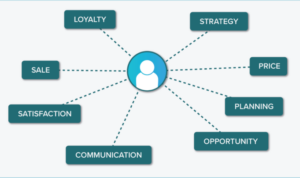Creating B2B Marketing Campaigns kicks off with a bang, diving into the world of business-to-business marketing with a fresh perspective that’s sure to grab your attention. Get ready to explore the ins and outs of crafting effective campaigns that drive results in the competitive business landscape.
From defining the target audience to setting clear objectives and exploring multi-channel marketing approaches, this guide covers everything you need to know to elevate your B2B marketing game. So, buckle up and prepare to take your marketing strategies to the next level.
Introduction to B2B Marketing Campaigns

B2B marketing campaigns are essential strategies used by businesses to promote their products or services to other businesses. These campaigns play a crucial role in driving sales, building relationships, and increasing brand awareness in the competitive business world.
Key Differences between B2B and B2C Marketing Strategies
- B2B marketing focuses on selling products or services to other businesses, while B2C marketing targets individual consumers.
- B2B marketing campaigns are often more complex and involve longer sales cycles compared to B2C campaigns.
- In B2B marketing, the decision-making process involves multiple stakeholders within the business, whereas B2C decisions are usually made by individuals.
Examples of Successful B2B Marketing Campaigns
- Adobe’s “CMO.com” website offers valuable content and resources for marketing professionals, positioning Adobe as a thought leader in the industry.
- IBM’s “Smarter Planet” campaign focused on showcasing how their technology solutions could help businesses become more efficient and sustainable.
- Cisco’s “The Network” campaign highlighted the importance of networking solutions for businesses in the digital age, emphasizing Cisco’s expertise in the field.
Target Audience and Market Research
Identifying the target audience in B2B marketing campaigns is crucial for reaching the right customers with the right message. Market research plays a key role in understanding the needs, preferences, and pain points of B2B customers, allowing businesses to tailor their marketing strategies effectively.
Significance of Target Audience Identification
Market research helps businesses identify the specific industries, company sizes, job roles, and pain points of their target audience within the B2B sector. This information enables companies to create targeted messages that resonate with their ideal customers, leading to higher engagement and conversions.
- Utilize customer personas to create detailed profiles of your target audience, including demographics, challenges, and goals.
- Segment your target audience based on factors like industry, company size, and purchasing behavior to personalize your marketing efforts.
- Monitor and analyze data from website analytics, social media engagement, and email marketing campaigns to refine your target audience over time.
Market Research Process for B2B Customers
Conducting market research in the B2B sector involves gathering data on industry trends, competitor analysis, customer feedback, and market dynamics. This information helps businesses make informed decisions about product development, pricing strategies, and promotional tactics.
- Survey existing customers and prospects to gather feedback on their needs, preferences, and pain points.
- Monitor industry publications, reports, and websites to stay informed about market trends, challenges, and opportunities.
- Utilize tools like CRM software, customer feedback platforms, and social listening tools to collect and analyze data on B2B customers.
Remember, market research is an ongoing process that requires businesses to stay agile and responsive to changing customer needs in the B2B sector.
Setting Campaign Objectives and Key Performance Indicators (KPIs)
When it comes to B2B marketing campaigns, setting clear objectives is crucial for success. These objectives serve as a roadmap to guide your efforts and ensure that you are moving in the right direction. Alongside setting objectives, defining Key Performance Indicators (KPIs) is equally important as they help measure the effectiveness of your marketing initiatives and track progress towards your goals.
Establishing Clear Objectives
To establish clear objectives for B2B marketing campaigns, start by identifying what you want to achieve. Whether it’s increasing brand awareness, generating leads, or driving sales, your objectives should be specific, measurable, achievable, relevant, and time-bound (SMART). By clearly defining your objectives, you can align your team’s efforts and resources towards a common goal.
Importance of Defining KPIs
Defining KPIs is essential in measuring the success of B2B marketing initiatives. KPIs help you track performance, optimize strategies, and make data-driven decisions. By setting KPIs that are aligned with your objectives, you can gauge the effectiveness of your campaigns and make adjustments as needed to improve results.
Common KPIs in B2B Marketing Campaigns
- Lead Generation: Measure the number of leads generated through your campaigns to determine the effectiveness of your lead generation efforts.
- Conversion Rate: Track the percentage of leads that convert into customers to assess the conversion effectiveness of your marketing activities.
- ROI (Return on Investment): Calculate the return on investment from your marketing campaigns to evaluate the profitability and efficiency of your marketing spend.
- Customer Acquisition Cost (CAC): Determine the cost of acquiring a new customer to understand the efficiency of your customer acquisition strategies.
- Website Traffic: Monitor the volume of traffic to your website to assess the reach and visibility of your B2B marketing campaigns.
These KPIs provide valuable insights into the performance of your B2B marketing campaigns and help you make informed decisions to optimize your marketing efforts.
Content Strategy and Creation
Developing a content strategy for B2B marketing campaigns is crucial for engaging with your target audience and driving conversions. This involves creating a plan to deliver the right content to the right audience at the right time.
Types of Content for B2B Audiences, Creating B2B Marketing Campaigns
Creating content that resonates well with B2B audiences requires a deep understanding of their needs and pain points. Some effective types of content for B2B marketing include:
- Whitepapers: In-depth reports that provide valuable insights and solutions to industry challenges.
- Case Studies: Real-life examples of how your product or service has helped other businesses.
- Webinars: Interactive online presentations that educate and engage your audience.
- Infographics: Visual representations of complex information that are easy to consume and share.
- Email Campaigns: Personalized messages that nurture leads and drive conversions.
Tailoring your messages to address the specific concerns and interests of B2B buyers is key to creating impactful content.
Tips for Creating Engaging Content
To create content that drives conversions in B2B marketing, follow these tips:
- Understand Your Audience: Conduct thorough research to identify the needs and preferences of your target market.
- Focus on Value: Provide valuable and relevant information that addresses the challenges faced by your audience.
- Use Data and Statistics: Back up your claims with data and statistics to establish credibility.
- Optimize for Search: Use relevant s and best practices to ensure your content is discoverable.
- Keep it Concise: B2B buyers are busy, so keep your content clear, concise, and to the point.
Multi-channel Marketing Approach: Creating B2B Marketing Campaigns

In the fast-paced world of B2B marketing, adopting a multi-channel approach can be a game-changer. By leveraging different channels, businesses can reach their target audience in various ways, increasing brand visibility and engagement.
Email Marketing
- Personalized email campaigns can be tailored to individual businesses, showcasing products or services that meet their specific needs.
- Automated email workflows can nurture leads and guide them through the sales funnel, increasing conversion rates.
- Segmenting email lists based on industry or behavior can ensure relevant content is delivered, maximizing engagement.
Social Media Marketing
- Platforms like LinkedIn offer opportunities to connect with professionals in the industry, build relationships, and establish thought leadership.
- Sharing valuable content, such as whitepapers or case studies, can position a business as an authority in the field.
- Engaging with followers through comments and messages can foster trust and loyalty, leading to long-term partnerships.
Content Marketing
- Creating high-quality and informative content, such as blogs or videos, can attract potential clients and educate them about the business offerings.
- Optimizing content for search engines can improve visibility and drive organic traffic to the website.
- Repurposing content across different channels, like social media or email, can extend its reach and impact.
Lead Generation and Nurturing
Lead generation is a crucial aspect of B2B marketing campaigns as it involves identifying potential customers who have shown interest in your products or services. Nurturing these leads is equally important as it involves building relationships with prospects to guide them through the sales funnel and ultimately convert them into loyal customers.
Lead Generation Process
- Utilize targeted content marketing to attract potential leads through valuable and relevant content.
- Optimize your website with lead capture forms to collect contact information from interested visitors.
- Engage in email marketing campaigns to reach out to potential leads and provide them with personalized content.
Importance of Lead Nurturing
- Building trust and credibility with prospects by providing them with valuable information and addressing their pain points.
- Guiding leads through the sales funnel by offering relevant content at each stage of their buyer’s journey.
- Increasing conversion rates by maintaining regular communication with leads and staying top of mind until they are ready to make a purchase.
Effective Lead Generation Tactics and Nurturing Strategies
- Hosting webinars or virtual events to showcase your expertise and attract potential leads.
- Utilizing social media platforms to engage with prospects and share valuable content.
- Implementing marketing automation tools to streamline lead nurturing processes and track prospect interactions.
Budgeting and ROI Analysis
In B2B marketing campaigns, allocating budgets effectively and tracking ROI are crucial for success. Let’s dive into how to manage your budget and analyze the return on investment in your marketing initiatives.
Allocating Budgets Effectively
When it comes to budgeting for B2B marketing campaigns, it’s essential to prioritize areas that will have the most significant impact on your target audience. Allocate resources to channels that have proven to drive results and adjust as needed based on performance data.
- Focus on channels with high conversion rates and ROI potential.
- Consider investing in content creation and distribution for long-term results.
- Allocate budget for lead generation and nurturing efforts to maximize ROI.
Importance of Tracking ROI
Tracking ROI allows you to measure the effectiveness of your B2B marketing campaigns and make data-driven decisions for optimization. It helps in identifying which strategies are working and which need adjustments to improve performance.
- Monitor key performance indicators (KPIs) to assess the impact of your marketing efforts.
- Track metrics like conversion rates, cost per acquisition, and customer lifetime value to evaluate ROI.
- Use tools like Google Analytics, CRM software, and marketing automation platforms to gather data for ROI analysis.
Measuring ROI in B2B Marketing
To measure ROI in B2B marketing accurately, you need to establish clear goals, track relevant metrics, and analyze campaign performance. This data-driven approach allows you to optimize your campaign spend and maximize returns.
- Calculate ROI by dividing the net profit from the campaign by the total cost and multiplying by 100 to get a percentage.
- Utilize attribution models to understand the contribution of each marketing channel to the overall ROI.
- Optimize campaign spend by reallocating budgets to high-performing channels and tactics based on ROI analysis.





